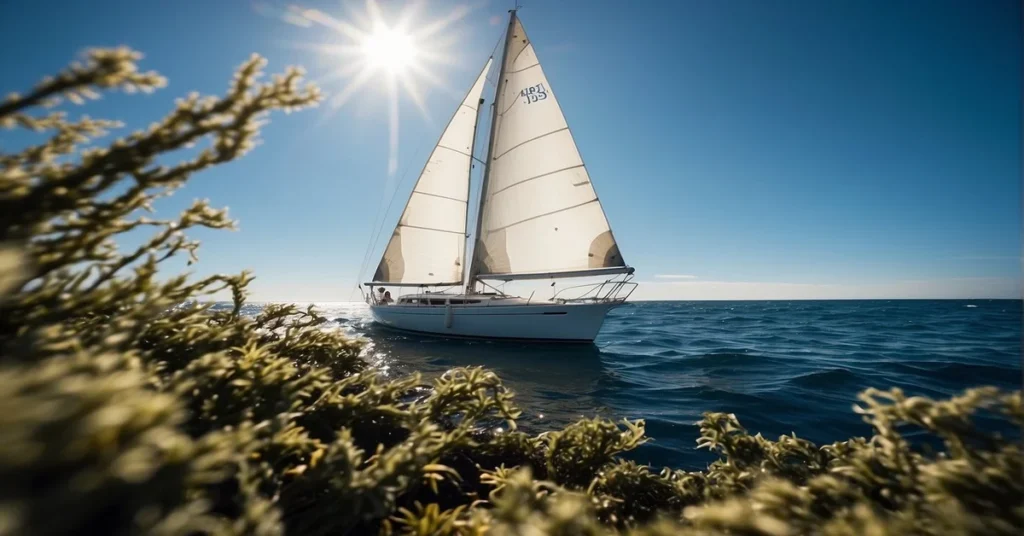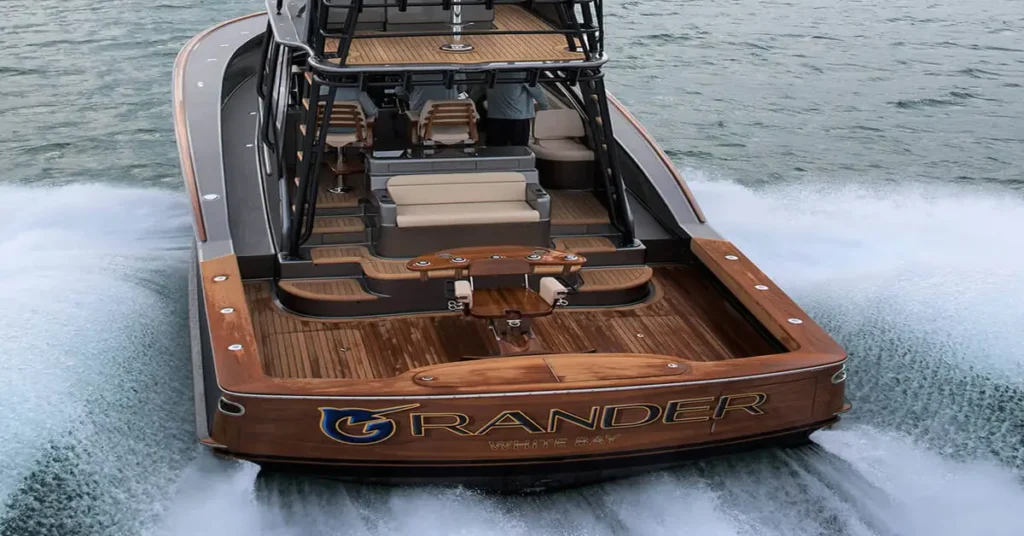Set your compass for discovery as we chart the course of the boat rudder, a timeless instrument of maritime mastery. In the ever-changing tides of sailing, the boat rudder is a testament to innovation, guiding old salts and fresh sailors alike.
Get ready to hoist your curiosity and sail into a sea of knowledge, where we’ll unlock the secrets of steering that promise to enhance your nautical adventures in 2025 and beyond.
Understanding Boat Rudder Design and Function
I’m excited to explore the world of boat rudders with you. In this “Boat Rudder Your Comprehensive Guide,” we’ll examine the intricacies of their design and function, which are essential for any vessel’s performance and safety.
Types of Rudders and Their Characteristics
Rudders come in various designs, each tailored to different types of boats and requirements. Spade rudders are a common type, known for offering excellent maneuverability due to their position far aft and ability to turn a full 360 degrees. On the other hand, Skeg rudders are supported by a skeg, providing additional stability but potentially reducing maneuverability.
Balanced rudders have a portion of the rudder forward of the turning axis, which reduces the force needed to turn the rudder. In contrast, outboard rudders are mounted externally on the stern, making them easier to access for repairs.
Materials and Construction
The construction of rudders has evolved, with materials like stainless steel, aluminum, fiberglass, and sometimes even wood being used. The choice of material significantly affects the rudder’s durability and performance. Stainless steel and aluminum provide strength and resistance to corrosion, while fiberglass is lightweight and often used in combination with other materials to balance strength with efficiency.
Rudder Position and Benefits to Steering
Rudder position is critical to a boat’s steering and overall handling. A well-positioned rudder ensures effective steering control and direction. Skeg-mounted rudders contribute to straight-line tracking and stability, while rudders closer to the propeller, such as those in skeg or spade configurations, improve maneuverability by leveraging the propeller’s water flow.
The Impact of Size, Shape, and Hydrodynamics
The size and shape of a rudder affect its hydrodynamic properties – including how water flows around it – impacting the vessel’s drag and lift. A rudder with the correct hydrodynamic design minimizes turbulence and improves steerage and efficiency. The rudder angle, or the angle between the rudder blade and the rudder stock, is adjusted to balance these forces effectively during operation.
Maintenance for Optimal Performance and Safety
Regular maintenance is essential to preserve the performance and safety of boat rudders. Routine inspection and lubrication help ensure that the rudder’s movement is smooth and free from excessive play, which can lead to vibration and noise. Checking for corrosion, especially if the rudder is made of metal, and repairing any damage immediately will greatly extend the rudder’s life and functionality.
Common Issues and Troubleshooting
Common issues with rudders range from corrosion to obstructions that can impede movement. If you experience excessive vibration, it may indicate imbalance or damage to the rudder blade. Turbulence or unusual steering behavior might suggest hydrodynamic problems, potentially requiring an expert’s attention to resolve.
Regular checks can help identify such issues early, allowing for timely corrections and preventing more severe complications.
Selecting and Caring for Your Rudder

When picking the ideal rudder for your vessel or keeping it in top shape, the key lies in understanding the specifics—type, material, and the system it complements. In “Boat Rudder Your Comprehensive Guide”, let’s navigate these waters together.
Choosing the Right Rudder for Your Vessel
The type of rudder you choose profoundly affects your boat’s performance. For sailboat rudders, balance and aspect ratio are crucial considerations. You’ll also want to consider material; fiberglass and carbon fiber are popular for their durability and lightweight properties. Assess your specific needs and budget to find a rudder that seamlessly integrates with your vessel’s steering mechanism.
- Full-keel rudder: Ideal for heavy displacement sailboats; offers protection but can be less responsive.
- Spade rudder: Common on modern sailboats for their superior maneuverability.
- Skeg rudder: Provides a balance between protection and performance.
When considering a rudder, remember that pintles and gudgeons (the hinges for the rudder) should be compatible with your boat’s design and built from corrosion-resistant materials.
Installation and Replacement Tips
Fitting a rudder requires precision and care, focusing on safety and functionality. If replacing an existing rudder, remove the old unit by detaching the tiller or steering wheel connection and unfastening the mounting hardware. Here are concise tips for installation:
- Align the new rudder with the pintles and gudgeons.
- Securely fasten all connections, making sure there is no undue play.
- Check the alignment with the steering mechanism to ensure smooth operation.
Best Practices in Rudder Maintenance
Regular maintenance and cleaning are non-negotiable to guarantee the longevity and reliability of your rudder. Establish a routine that includes:
- Inspection: Regularly check for signs of wear, cracks, or corrosion.
- Cleaning: Remove marine growth with gentle scraping and apply fresh antifouling paint when necessary.
- Protection: Use appropriate covers during off-season storage to prevent damage.
Staying ahead of maintenance will defend your rudder against common issues, boost your peace of mind, and enhance your boat’s overall performance. Remember, a well-maintained rudder helps ensure a safe voyage.
FAQ – Boat Rudders

As I navigate the essentials of boat rudders in this section of “Boat Rudder Your Comprehensive Guide,” I’ll address the most frequently asked questions crucial to understanding this critical component of boat steering.
What is the rudder on a boat?
The rudder is a flat material, often shaped like a vertical blade, attached to a boat’s stern. It’s a pivotal element that allows for the boat’s steering by redirecting water flow, which alters the vessel’s course.
You can read about the rudder blade and rudder stock for a detailed exploration of its components.
What is the purpose of the rudder?
The primary purpose of the rudder is to steer the boat. By turning the wheel or tiller, mariners can change the rudder’s angle, which creates drag and applies force against the water, causing the boat to turn in the desired direction.
Insights into the dynamics of this steering process can be found here.
Can you steer a ship without a rudder?
Steering a ship without a rudder is challenging but not impossible. Without it, vessels must rely on alternative methods like using thrusters, altering engine speeds on multi-engine setups, or adjusting sails to manipulate the course. However, these techniques are less precise and can be ineffective in certain situations, making the rudder an indispensable component of marine navigation.
The consequences of rudder failure are substantial, emphasizing its importance, as discussed in this overview of rudder significance.
Drop anchor in the comments below and share your rudder revelations or sailing stories – We’re all crew members here eager to navigate the diverse waters of opinion and experience!



